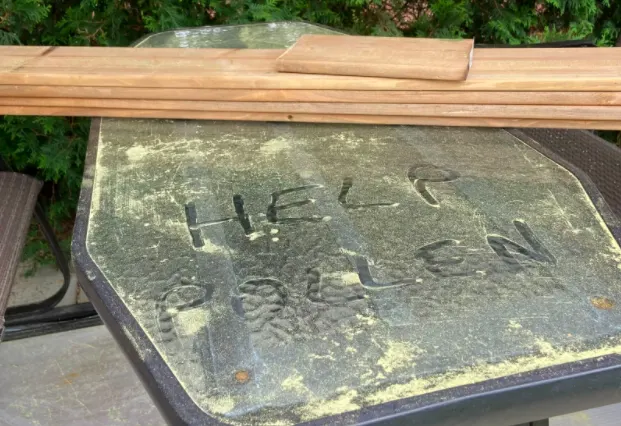
Higher pollen counts in some Canadian cities mean a more severe allergy season
Spring and summer signal the start of pollen season and that means many Canadians are feeling allergy symptoms. But experts say this year pollen counts are particularly high for some cities in the country.
Are you finding yourself sneezing more? Is your nose sniffling or itching? Are your eyes watering? Are you experiencing worse-than-normal allergy symptoms?
You are not alone. Anywhere between 15 per cent and 25 per cent of Canadians experience allergies to one or more types of pollen. Experts are saying pollen counts in 2021 have been higher than normal in some parts of the country.
“The entire ‘401 corridor’ from Montreal to Toronto has had the highest counts, according to [Ottawa-based Aerobiology Research Laboratories]. B.C. as well has been hit hard this spring,” said Dr. Anne Ellis, an allergist and immunologist at Queen’s University in Kingston.
There are different types of tree pollen, but the most allergenic is that of the birch tree. There is also grass pollen and ragweed pollen. All of them emerge at different times.
“The pollen count reflects an average of the daily number of pollen grains in the air over the course of a 24 hour period,” said Dr. Ellis. “Generally speaking, tree pollen season begins in late April, lasting until the end of May. The tree pollen season starts earlier in warmer provinces, however. For example, trees start pollinating in February in British Columbia.”
She says grass pollen season typically starts mid-May and lasts until the end of July and ragweed season starts mid-August and lasts until mid-October or the first heavy frost.
“Because the grass pollen season has started before the tree pollen season has ended. Thus two assaults to your immune system at the same time,” she added.

Allergists say pollen counts are particularly virulent in parts of Canada this year (Photo by KS in Mercier, Que.)
Dr. Susan Waserman, an allergist and clinical immunologist at McMaster University, adds usually people pick up allergies as a bunch.
“It's not unusual for us to see what we call polysensitized people meaning that they'll be allergic to all types of pollens in addition to other allergens like house dust, mites and pets,” she said. “So if you're allergic to all three pollens, you're talking about a good six months out of the year that you may be symptomatic.”
Dr. Waserman says the length of the allergy season is variable depending on the weather and where you live. She believes that people may also be more aware of their symptoms after being stuck indoors during the pandemic. But she also believes there’s more to the bigger picture.
“Across the country, there are certain common themes. We are seeing, perhaps, more global warming, somewhat longer growing seasons, somewhat more CO2. All of these things are creating probably a longer pollen season and greater counts overall. This is kind of the big picture that has to be kept in mind,” says Dr. Waserman.
Anyone feeling symptoms such as runny nose, itchy eyes, ears and throat, and watery eyes should consult with an allergist to figure out what exactly they are allergic to.
“Don't make assumptions. It may not be pollen, it may be a new pet that you purchased, it may be one of many things and testing is the only way to know for sure exactly what you're allergic to,” Waserman says. “We have a very short spring and summer. Enjoy every minute of it. It's not a time to stay indoors or go outdoors masked for the simple purpose of avoiding pollen.”











